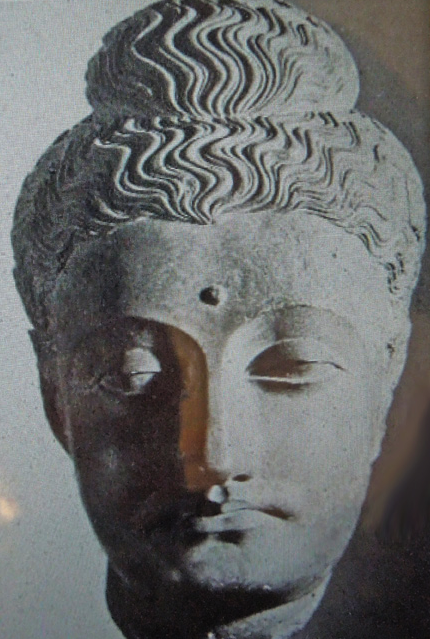The brilliant scholar, writer, and postmodernist art critic Thomas McEvilley died in March of this year, but his scholarship may yet spawn a renaissance in our understanding of the ancient world. His epic work, The Shape of Ancient Thought, advances a breathtaking perspective on how ancient philosophies grew and influenced one another. Our view of the philosophical and religious development of Greece, Rome, South Asia, and even East Asia may undergo a sea change if the arguments in this book are widely recognized. It is certainly important that past and future archeological work be held up against McEvilley’s insights.
For readers of Tricycle, the astonishing bit of McEvilley’s story will concern how ancient Greece may have influenced, or even given rise to, the philosophies behind Mahayana Buddhism. After Alexander the Great conquered much of northern India, Greek colonists remained behind to rule or exert influence. Greek influence continued in the Bactrian, Parthian, Greco-Indian, and Kushan empires. Art historians and teachers of comparative religion have long pointed out Greek influence on early Buddhist art. The earliest surviving statues of Buddha are Greek in style and execution, and would not look out of place in the Parthenon or as an adornment to the Theatre of Dionysus.
 McEvilley’s broad treatment of early thought in Greece and India also shows that culture is not a one-way street: Indian influence on early Greek philosophy appears highly likely. Later, Greek philosophical schools and methods appear to have direct correlations to Buddhist and other movements, such as Jainism, that arose in areas where Greek influence survived. Knowledge went both ways.
McEvilley’s broad treatment of early thought in Greece and India also shows that culture is not a one-way street: Indian influence on early Greek philosophy appears highly likely. Later, Greek philosophical schools and methods appear to have direct correlations to Buddhist and other movements, such as Jainism, that arose in areas where Greek influence survived. Knowledge went both ways.
In a previous blog I mentioned that the Buddha’s earliest guardian deity may have been Herakles—better known in the West in his Roman form, the god Hercules—who appears guarding one of the earliest known statues of the Buddha.
Other features of early Greek statues likewise give pause. A particularly interesting Gandharan Buddhist statue displays a Greek-looking Buddha sporting the hair style of the Greek god Apollo. One can’t help but wonder whether this strange hairdo is what gave rise to the peculiar appearance of the Buddha’s scalp in East Asian art.
McEvilley’s book offers several interesting connections between specific schools and tenets of Greek philosophy and their Asian counterparts. Although some of the parallels require more evidence to be wholly convincing, the scholar’s arguments paint a convincing picture of an ancient world shaped by mutual influence between neighbors.
—Andy Ferguson
This post is part of author and scholar Andy Ferguson’s new “Consider the Source” series. As an old Chinese saying goes, “When drinking water, consider the source.” In the coming weeks, Ferguson will ask and answer seemingly simple (but in the end, profound) questions about the “source” of East Asian Buddhism, weaving a tale of both spiritual inspiration and political intrigue.
This fall, Tricycle will be traveling to the source itself, China, in a special pilgrimage led by Ferguson and abbot of the Village Zendo Roshi Pat Enkyo O’Hara. Want to come with us? Click here for more information.
Ferguson is the author of Zen’s Chinese Heritage: The Masters and their Teachings, which is used widely by Western Zen teachers, and Tracking Bodhidharma, which offers a wealth of new information about the founder of Chinese Zen Buddhism.
Thank you for subscribing to Tricycle! As a nonprofit, we depend on readers like you to keep Buddhist teachings and practices widely available.